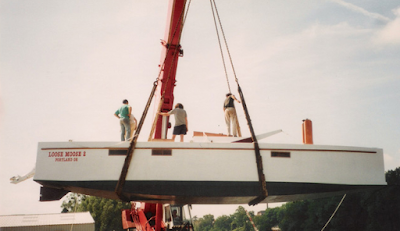For some folks, the whole idea of a boat as a home is a tough concept to get their head around and I can’t bother to explain it to them. I expect since you’re here that you get the concept in some shape or form and because it interests you.
Then again, maybe you’re here for a whole different reason. If you are, I’d like to know why...
Anyway, in my experience, there are two ways to consider a boat as a home; the first is a boat can be a home that takes you where you want to go as opposed to the other sort which are homes that float. While there is some overlap between the two, a VolksCruiser is the sort of boat that will take you where you want to go.
The concept of nomadic living, whether seaborne or land bound, has a lot to do with various factors like climate, income, economics, and survival. A newish factor is the idea of travel for enjoyment, which is a very different ball park indeed.
Most people entertaining the idea of living aboard and cruising the world stems from a mix of the various factors or all of the above, though percentages may vary.
I’ve met a lot of cruisers who avoid winter, some on budgets, and others because they want to do something different that the same old same.
Some of those cruisers have lots of money while others have a lot less, which is just how it goes in our current world situation
Same as it ever was.
Nomadic folks can, with a bit of homework, cruise in comfort. All it takes is some situational awareness and a willingness to cruise outside the established cruising routes to achieve a “lot less” budget.
More about that soon come.




